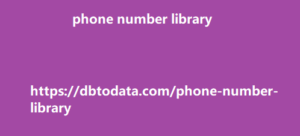Imagine a user searching for the term ‘medicine for cough’. After searching they chose to click a particular result that they believe best represents the answer they are looking for (because a loved one or they themselves are suffering from cough) then they unwillingly find themselves on a web page that’s making them apply for a gym membership. The content and meta tags you set in your pages must always be relevant to the search term you’re targeting. Not only does this prevent unintentionally practicing ‘cloaking’, but it even improves your overall website ranking. Use Appropriate Hidden Content Hidden content is sometimes stuffed in a website to manipulate rankings.
This is done in a way that the text or link
involved in increasing the rankings is stuffed within the HTML of the web page but not appearing (or minimally appearing) in the actual display. It can appear as the following: White text on white background Underneath an element (images, videos, and other forms of media) Placed off-screen Setting opacity to 0 It is also important to note that there are particular exemptions when implementing hidden content. These exceptions are the ones that are centric on improving user experience. Such as the following: Accordion elements Sample Of Accordion Element in HTML Slideshow/Carousel web page elements Tooltips Example Of A Tooltip source: https://userguiding.
com/blog/tooltip-examples-best-practices/
Keep Your Redirects In Check Google only considers a redirect as SEO Spam whenever a user is directed to an unexpected web page. For example, a user clicking on a link text writing ‘SEO strategies’ was directed to a page about ‘farm animals.’ They fell trap in what we call a Sneaky redirect. Sneaky redirects are originally intended to build traffic to a website unrelated to the anchor text or search query. As one of the SEO factors that can easily be ignored, issues with redirects can accumulate the older a website gets. This is why it’s essential to regularly check your redirect paths- apply the appropriate redirect and make the anchor text relevant to your links.
To get the full list of redirects on your
website, check out my favorite tool, Screaming Frog. Avoid Link Spamming With backlinks being an essential ranking factor, it is important to keep your website safe from link spamming opportunities. A lot of people nowadays see their authoritative pages as opportunities to make money. They choose to sell the convenience of creating backlinks in a website to boost others. These are exactly the kind of opportunities you should avoid. Google’s purposely improving its algorithm updates to address these types of issues. Other forms of link spamming include excessive link exchanges between webmasters, automated link-building methods, and widely distributed links within the footers of varied questionable websites.
You must always be cautious about any form
of ‘easy’ generation bosnia and herzegovina phone number library of backlinks. To this day, it’s still best to practice the traditional ways of reaching out to webmasters to build guest posts and diligently creating good-quality backlinks. Learn more about the SEO malpractices of link building and how to fix them!Title tags are being forcibly replaced by Google. For sure you have noticed this if you have been paying attention to your website’s search rankings. Here’s what you can do about it now and how you can make it work to your advantage. This is a follow-up to Google’s core and helpful content update rollout last September.
The Google search results update involves:
Replacing title tags with site names Favicon’s (website’s logo or icon) expanded size and shape The prominence of search ads’ label to “Sponsored” in bold black text Why Google Made This New Search Results Update According to Google, adding site names to search results on mobile will enable users easily identify websites associated with each result. This update will also help users make sense of the information they see in the search results at a glance. Do take note that this feature is only available for Google mobile search results in English, German, French, and Japanese languages as of today. Also, this feature currently only supports home pages at the domain level, not at the subdirectory level.
a screenshot of a replaced title tag As you can
see, when I did a mobile search that distribute ads on different for SEO Hacker, it showed the search engine results page (SERP) with the name of our website. It also showed the company’s favicon and breadcrumbs at the same time. However, when I did a non-branded keyword mobile search (I typed “SEO Philippines”), the title tags still showed in the SERP. non-branded keyword sample It’s also worth noting that when you type the brand name and its related keywords, title tags will still show in the SERP. Looking at the examples above, you will see a website name and the URL for each result.
This brings a better context of what websites
you see, so you can be confident china data of the websites you are visiting. I also did notice that the size and shape of the website’s favicons have changed, making it easier for brands to be visible. Finally, Google made sure that the paid ads in the search results are visible enough for the users to see by changing the ad notifier from “Ads” to “Sponsored.” What You Need To Know About This Feature Update Some SEO experts like myself get all Google’s past update rollouts, they have greatly impacted the volatility of website rankings.

